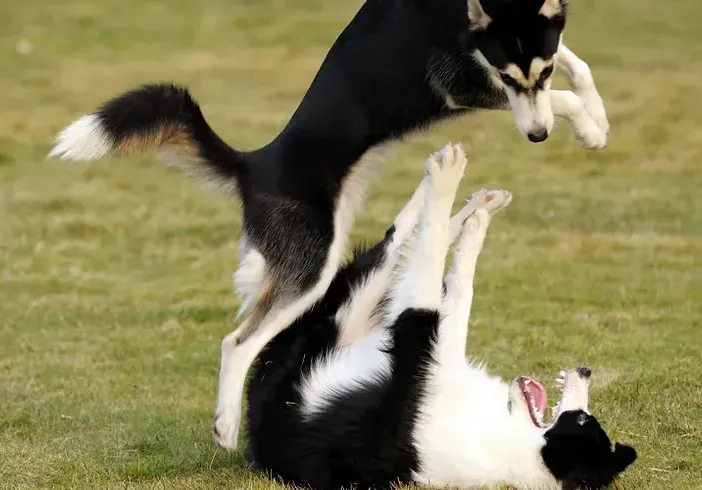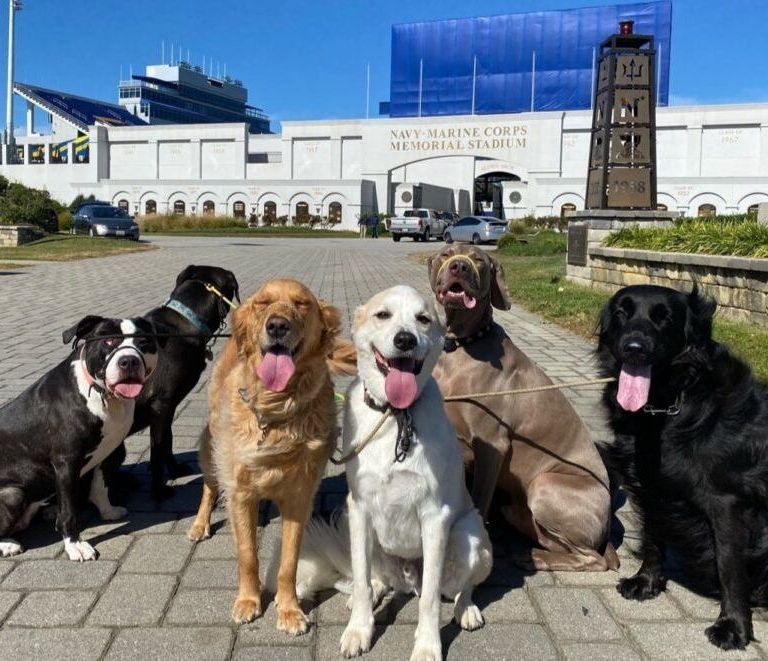Preparing Your Dog For Social Situations With Obedience Training
A Dog Trainer’s Guide To Socialization
Obedience trainers often encounter the term 'dog socialization' in their interactions with dog owners. This lingo gets passed around from dog owner to dog owner and is known to be the rite of passage for ensuring that their dog is prepared for social interactions. However, there is a major misconception that socializing a dog prepares them for social situations. In fact, many dogs are sensitive to different types of environments and can display fear, aggression, and anxiety despite the number of hours spent socializing.
What exactly is dog socialization? Dog socialization is the act of introducing a dog to other dogs and people. This is a recommended practice for puppies so that the puppy can learn how to adopt and understand common dog behavior. Puppies learn to read dog body language through interaction with older dogs and as a result become more comfortable in social situations with their own species. Similarly, when dogs are introduced to new people they are able to observe body language through gestures, hear voices and understand how humans act and communicate. This gives a dog an understanding and awareness of what being social looks like. Many obedience trainers recommend dog play dates with other dogs you are familiar with…a friend or family dog that you know is healthy and calm. This provides an opportunity for your dog to socialize in an environment that is low risk: no injury, illness exposure, or high anxiety situations.
Speak With A Dog
Training Expert
Speak With A Dog Training Expert
Thank you for contacting us!
We will contact you shortly!
Please try again later.
Obedience Training Meets Adaptation
All dogs have one thing in common: the societal pressure to be a “good dog.” Adopting and raising a handicapped dog is a wonderful humane act. However, whatever limitations your dog may face does not make them immune to societal expectations. Thankfully, obedience training is an enriching activity that can be achieved by any dog, regardless of their limitations, and is the first step toward helping your dog adjust to living in a high pressure world.
The first step for a dog obedience trainer is to identify your dog’s limitations. Understanding what caused your dog's disability will give the trainer insight into how your dog needs to be communicated with, helps the trainer set reasonable expectations, and also helps your dog’s trainer avoid any pain points on your furry family member. Similar to human beings, disabilities in dogs can
Speak With A Dog
Training Expert
Speak With A Dog Training Expert
Thank you for contacting us!
We will contact you shortly!
Please try again later.
arise due to various reasons. Some dogs are born with disabilities, while others may become handicapped due to congenital or contracted diseases or injury. It is quite common for a dog to experience blindness, deafness, or experience mobility challenges that can require training modifications. An expert dog obedience trainer will be able to create a training program for your dog that will help your dog to avoid painful movement and have fun while learning new skills. Your dog’s trainer will also be able to take advantage of your dog’s heightened senses to help make adaptive learning possible. Focusing on your dog’s available senses will help you as the owner understand your dog’s strengths and weaknesses and rethink the way your dog needs to be communicated with. With all of this in mind, the obedience trainer will be able to put together an adaptive learning plan to suit your dog and its unique needs.


Preparing Your Home For A Disabled Dog
First and foremost, it is important to remind any dog owner or future dog owner that owning any pet is a lifetime commitment. It is crucial that your dog is fully integrated into your everyday life and that it knows you are dedicated to ongoing care for it. Time is an aspect of dedication towards your dog. Adopting or owning a disabled dog requires time invested into researching and understanding your dog's limitations. Time is also required for dedicated training and working with your disabled dog. A lot of patience and attention to training is needed compared to a fully able dog, and alternative training techniques created by a professional trainer can be time consuming.
The financial responsibility of caring for a disabled dog is another factor to consider when making this life long commitment. While some disabilities do not require medical intervention, others may require ongoing treatment or medical expenses is the disability has the potential to worsen as the
Dog Training For The Spotlight: Socialization vs Desensitization
What dog socialization isn’t: teaching a dog to positively interact with people, environments, and other dogs. Many dog trainers receive requests for “dog socialization,” but this is really a red flag for the trainer to dig deeper into the underlying behavioral issue. If a dog becomes defensive, overly excited, fearful, hides or displays any other reaction different from their normal behavior, it is an indication that the dog is in need of desensitization and not socializing.
What is desensitizing and how is it different from socializing? Desensitizing is the behavioral process of teaching a dog how to be less sensitive towards things in their environments. Through desensitization, a dog or puppy will become comfortable with common noises that typically startle dogs. Introducing a dog to noises of people talking, laughing, babies crying, children squealing, loud trucks, sirens, cars driving, backfire, etc will give them the opportunity to understand they are safe and the sounds are a normal part of life. Desensitization helps a dog become well-adjusted, calm and confident no matter their surroundings.
Dog behavior training can specifically cover desensitization training if a dog is struggling within social settings. Simply providing socialization opportunities for a dog will give the dog more interaction time with other K9’s and people, but they are not learning how to become comfortable with the world around them. Desensitization training helps a dog learn how to access a calm state of mind through repeated exposure and guidance in a one-on-one environment. Giving a dog who struggles to cope in social settings the opportunity to practice and receive the support they need by a professional in a controlled environment will help the dog develop into a confident and well-rounded K9 in all social situations.
dog ages. Tools are another financial investment needed to help a dog’s limitations adapt to its environment. For example, a head collar or halter may be needed to help a blind dog navigate new spaces by preventing it from bumping into barriers. If your dog has a mobility handicap, a dog cart or lifting harness can be used to help your dog move around without much pain. Private obedience training classes are also another crucial investment for helping you and your dog adapt to its lifestyle in its home and social environments. An obedience trainer will help you teach your handicapped dog how to associate obedience with good things through positive reinforcement. The trainer will also help you learn how to be observant to your dog's signals and cues for communicating its needs. The obedience trainer will also help to nurture a great relationship between you and your handicapped dog by prioritizing simple obedience instructions for you and your dog to learn together.
Dogs are remarkable creatures. Owning a dog with a handicap can help you learn new ways to look at and adapt to the world around you. While a dog’s disabilities can make obedience training more challenging, Enrolling your disabled dog into an obedience training program will expand their ability to live a full and rewarding life.
